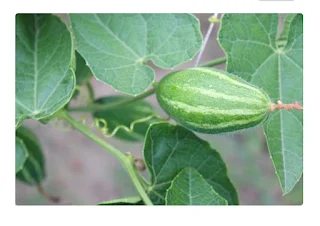Patoladi Kahayam, Benefits, Uses, Dose
Patoladi
Kashayam
Introduction
Patoladi Kashayam is a classical Ayurvedic
herbal decoction primarily used in the management of skin diseases, fevers, and
inflammatory conditions. It is especially effective in pitta-kaphaja
disorders due to its cooling, detoxifying, and blood-purifying properties.
This formulation is frequently prescribed in traditional South Indian Ayurvedic
practice for managing Kushta (skin diseases), Jwara (fever), and more.
This formulaion works by eliminating Dosha
through its Shodhan (Virechanik) Property. Rather than Guduchyadi
Kashayam having similar systemic actions, works by Dosha Shaman activity.
Table of content
- Introduction
- Contents
- Patola
- Dose
- Uses
- Compatibility
- Classical Reference
- Synergistic action
- Benefits
- Key Differences Between Patoladi and Guduchyadi Kashayam
- Conclusion
Contents
of Patoladi Kashayam
Patola:
The Prime Ingredient
Patola (Trichosanthes dioica), commonly known as pointed gourd, is
valued in Ayurveda for its Pitta-pacifying, anti-inflammatory, and
detoxifying actions. It plays a central role in Patoladi Kashayam, helping
treat conditions such as fever, itching, and skin rashes.
Dosage
The usual adult dosage is 15–30 ml of Patoladi Kashayam
decoction mixed with an equal quantity of warm water, taken once or twice daily
before meals.
Pediatric use and dosage should always be decided by a qualified
Ayurvedic practitioner.
Uses
of Patoladi Kashayam
This kashayam is prescribed for:
- Various types of skin diseases (Kushta)
- Fever (Jwara)
- Allergic reactions, itching, and rashes
- Pitta-related disorders like burning sensations, excessive thirst, or
inflammation
Its powerful anti-inflammatory and detoxifying qualities help cleanse the blood
and support liver health.
Compatibility (Anupana and Pathya)
Patoladi Kashayam is generally taken with warm water.
During treatment, it is
advisable to avoid spicy, fried, and oily foods.
A bland, easily digestible
diet rich in moong dal, rice, and boiled vegetables supports the action of this
medicine.
Classical
Reference
Patoladi Kashayam is mentioned in classical Ayurvedic texts such as
Ashtanga Hridaya and Sahasrayoga.
These texts describe its
application for skin diseases, fevers, and other inflammatory conditions
related to Pitta and Kapha dosha.
Patoladi Kashayam: Synergistic Action
Note: Some regional or proprietary
variations may include other herbs like Patha, Musta, etc.
🔸 Synergistic Action
Each herb in Patoladi Kashayam contributes to its detoxifying,
anti-pyretic, and skin-healing effects, but their combination enhances the
overall Pitta-reducing and blood-purifying action:
Patola + Nimba: Both are tikta (bitter)
and kashaya (astringent) in taste, helping to detoxify rakta dhatu (blood) and
pacify pitta dosha, especially in skin diseases like eczema, acne, and
psoriasis.
Chandana + Parpata: These herbs have a
cooling effect, reducing internal heat and inflammation during pitta jwara
(fevers of pitta origin) and burning sensations.
Katuki + Guduchi: Excellent
hepatoprotective duo; they stimulate liver function, enhance digestion, and
eliminate toxins.
Vasa: Adds anti-inflammatory and
bronchodilatory action, making it helpful in pitta-related respiratory issues.
🔹 USES
The synergy of these herbs makes Patoladi Kashayam especially
powerful in:
Pitta-type fevers
Skin eruptions
Liver congestion
Burning sensation
Jaundice and urticaria
Inflammatory disorders
✅ Key Differences Between Patoladi
and Guduchyadi Kashayam
|
Feature |
Patoladi
Kashayam |
Guduchyadi
Kashayam |
|
Main
Dosha Targeted |
Pitta
+ Rakta + Some Kapha |
Pitta
+ Rakta (mainly) |
|
Primary
Use |
Skin
diseases, fever, liver issues, urticarial |
Fevers,
UTIs, burning micturition, pitta imbalance |
|
Key
Herbs |
Patola,
Nimba, Vasa, Katuki |
Guduchi,
Mustha, Usheera |
|
Liver
Support |
Strong
action via Katuki and Guduchi |
Moderate
support |
|
Respiratory
Support |
Included
via Vasa |
Not
emphasized |
|
Cooling
Effect |
Strong
but slightly milder than Guduchyadi |
Stronger
cooling and diuretic |
|
Anti-Pyretic
Effect |
For
pitta-kapha fever and skin rashes |
For
chronic and all types of fever |
🔚 Conclusion
Both Patoladi and Guduchyadi Kashayam are
jewels of Ayurvedic therapy in pitta and Rakta vitiation, but their indications
and strength differ. While Patoladi is stronger for liver and skin
detoxification, Guduchyadi is more effective in systemic cooling, burning
urination, and chronic fever conditions.
You can consult an Ayurvedic practitioner
to decide which Kashayam suits your Prakriti (constitution) and condition best.
These formulations offer a beautiful example of how herbal synergy can enhance
the efficacy of Ayurvedic treatment.



.jpeg)

Comments
Post a Comment